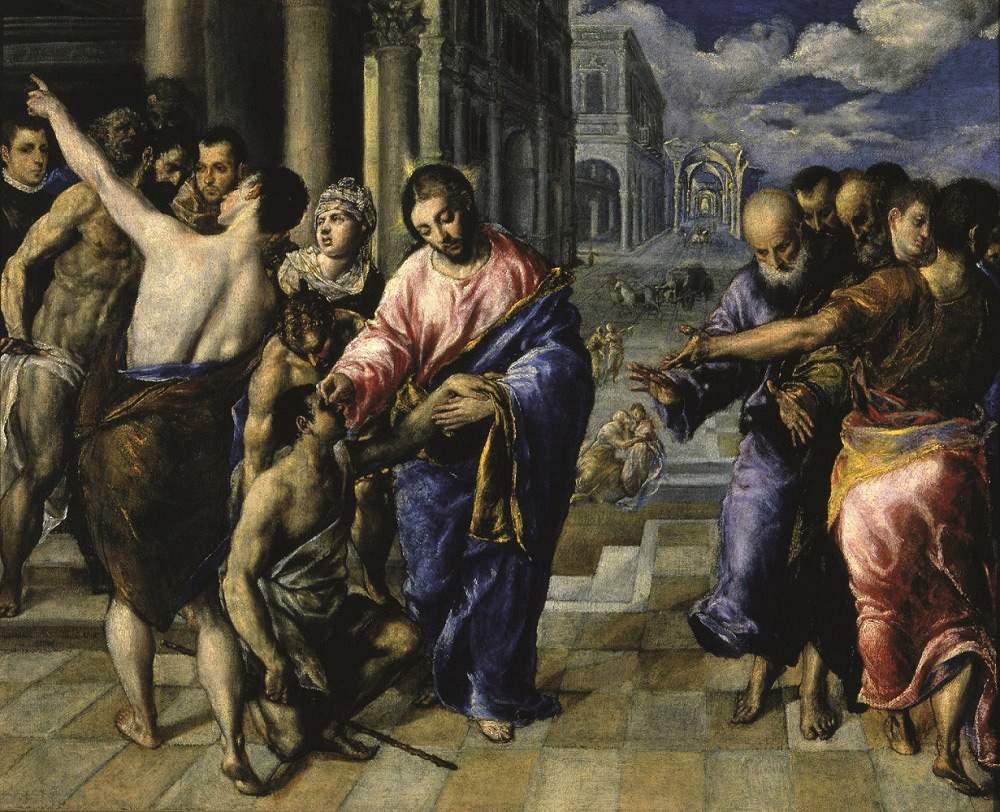Scheduled from February 27 to May 27, 2018 at the Uffizi is the exhibition Spain and Italy in Dialogue in Sixteenth-Century Europe: an exhibition to investigate and deepen the contacts, relationships, and comparisons between the two countries during the 16th century. In theAula Magliabechiana, the Florentine museum’s new space for exhibitions inaugurated last year, come works by artists such as Alonso Berruguete (Paredes de Nava, 1488 - Toledo, 1561), one of the first Spanish artists to develop a Renaissance language, or such as Romolo Cincinnato (Florence, 1502 - Madrid, 1593) and Pompeo Leoni (c. 1533 - Madrid, 1608), Italian artists who were in turn called to work in Spain, and also Francisco Pacheco, Patricio and Eugenio Cajés, and Vicente Carducho, all leading figures of 16th-century Spain. Also on display are works by the great El Greco (Domínikos Theotokópoulos, Iraklion, 1541 - Toledo, 1614), and by the so-called Aguilas del Renacimiento español that is, in addition to Berruguete, Pedro Machuca, Bartolomé Ordoñez and Diego de Siloe: these are the four fundamental artists of the Spanish Renaissance, which arose also thanks to their stay in Italy. An important exhibition, curated by Marzia Faietti, Corinna T. Gallori and Tommaso Mozzati, to investigate a lively and fruitful relationship.
In the exhibition come mainly drawings, many of which are part of the Uffizi collection, but also paintings, works of goldsmithing and applied arts, as well as sculptures, to compose an itinerary formed by eight sections: the introduction delves into the artistic context of Spain in the late 15th and early 16th centuries, then the first section displays a series of works by Spanish artists trained in Italy at the beginning of the 16th century, such as Berruguete, Ordoñez and Gaspar Becerra. The second room is also dedicated to them, and in particular to a comparison between their representation of the nude and the same theme in Italian art. The third section explores the influence of Tuscan and Roman painting on Spanish art in the 1940s and 1950s (also exhibiting drawings by Sebastiano del Piombo and Giorgio Vasari), while the fourth investigates the displacement of artists (a particularly significant example is El Greco). The fifth and sixth sections, on the other hand, take the audience through the great undertaking of the Monastery of San Lorenzo at the Escorial and the use of the graphic arts by King Philip II of Spain to promote the important construction site. The seventh section illustrates Spanish art of the last three decades of the 16th century, and the conclusion is instead entrusted to the art and legacy of the brothers Carducho and Cajés.
“Around the sixteenth century,” explains Eike Schmidt, director of the Uffizi Galleries, "the political and intellectual trends of the Spanish kingdoms and the Italian territories were coming closer together, resulting in continuous and unexpected overlaps, from the pontificate of Pope Alexander VI Borgia to the conquest of the Neapolitan domains, from the annexation of the Duchy of Milan to the stable assertion of Spanish influence on the Italian peninsula: this situation thus led to cultural exchanges of considerable importance.
“Every artist and his or her works are in fact always the result of an uninterrupted circulation of ideas and forms,” says curator Marzia Faietti, director of the Gabinetto dei Disegni e delle Stampe of the Uffizi Galleries, “and therefore writing about drawing in Spain, as about drawing practiced in Italy or anywhere else, means constantly broadening the horizons of research by coming close to the breaking point of the notion of school without, however, renouncing the philological recovery of the artistic fabric of a place and the analysis of the transmission of knowledge in the different workshops.”
The exhibition is open during the opening hours of the Uffizi Galleries: Tuesday through Sunday from 8:15 a.m. to 6:50 p.m. (ticket office closes 45 minutes before). Monday closing day. Tickets: until Feb. 28 full 8 euros, reduced 4 euros. From March 1 to May 27 full 20 euros, reduced 10 euros. Reduced price is reserved for EU citizens between 18 and 25 years old. Free admission for under 18s of any nationality, disabled and accompanying person, journalists, teachers and students of Architecture, Conservation of Cultural Heritage, Education Sciences, Bachelor of Arts and Philosophy degree with archaeological or historical-artistic degree addresses, Bachelor of Arts degree or corresponding courses in EU member states, Italian teachers with fixed-term and open-ended contracts in service at a public or equal school in the country. Catalog published by Giunti.
Image: El Greco, The Healing of the Blind Born (c. 1570-1576; oil on canvas; Parma, Galleria Nazionale)
 |
| From Berruguete to El Greco, an exhibition at the Uffizi on relations between Italy and Spain in the 16th century |
Warning: the translation into English of the original Italian article was created using automatic tools. We undertake to review all articles, but we do not guarantee the total absence of inaccuracies in the translation due to the program. You can find the original by clicking on the ITA button. If you find any mistake,please contact us.